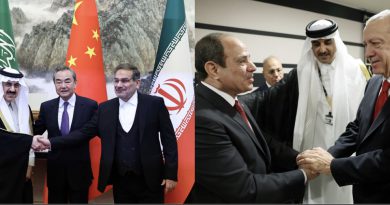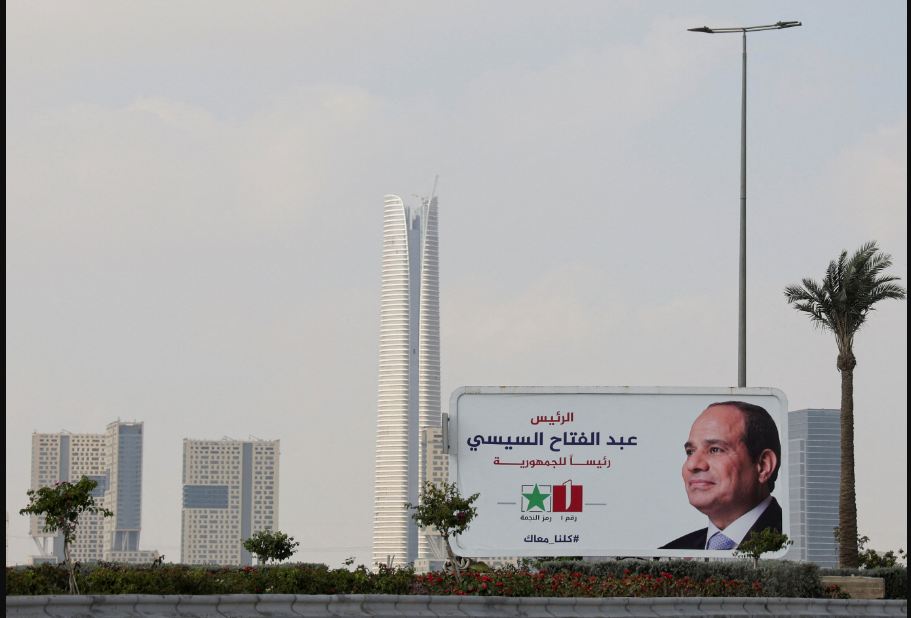Iran Protests, a Turning Point in Iran’s Political and Social Spectrum
by Mohammed Sadat Khansari
Khamenei made the same mistake as his predecessor Shah Mohammad Reza Pahlavi in slaughtering protesters
The nationwide Iran protests of November 2019 were a turning point in Iran’s political and social spectrum. Many experts believe that with the crackdown on the protests, the Iranian regime has lost its internal and international legitimacy and it is on the verge of collapse.
The protests initially started due to the tripling of gasoline prices, but rapidly became political and erupted with anti-regime slogans. In dealing with the November 2019 protests, the regime’s Supreme Leader Ali Khamenei made two strategic blunders.
The first mistake was tripling the gasoline prices that led to the protests, and the second mistake was the bloody crackdown on the protesters, which resulted in the slaughter of more than 1500, injury of 4000 and the arrest of 12000 people.
Names of 14 More Martyrs of the Nationwide #IranProtests Released https://t.co/gCVZPKSXx2#FreeAllProtesters #Internet4Iran
— NCRI-FAC (@iran_policy) December 29, 2019
Khamenei made the same mistake as his predecessor Shah Mohammad Reza Pahlavi in slaughtering protesters on September 8, 1978. That massacre was a turning point which five months later led to the overthrow of the Shah on February 11, 1979.
The result of the September 8, 1978 massacre, which was aimed at controlling the situation and creating a split in the ranks of the movement, was quite to the opposite. It unified the ranks of the anti-monarchy movement; it ended any compromise under the banner of the “constitution” and paved the path for the “Down with the Shah” slogan by millions of people.
The November 2019 uprising, which was the most brutal public killings on the street, was a turning point in developments of the events in Iran. On the one hand, the hollow might of the Revolutionary Guards and the regime’s forces in the minds of the people faded away, and on the other hand, it changed the domestic and international equilibria for the regime. The state of affairs will never return to what it was before the uprising.
Now, it is the regime, and not the people, who are under constant fear, fear of another uprising. The mullahs are desperate because they are facing an organized resistance movement led by the People’s Mojahedin Organization of Iran (PMOI, Mujahedin-e-Khalq or MEK) and their Resistance Units. And this is the source of their fear.
During and after the uprising, the senior authorities of the regime time and again acknowledged this fear by speaking about the role of the MEK’s Resistance Units and Rebellious Cities in Tehran and across Iran.
Activities of #MEK resistance units- Khamenei, Rouhani Must Face Justice for Committing #CrimesAgainstHumanity https://t.co/RwvMQ3xz8f#IranProtests #Internet4Iran
— NCRI-FAC (@iran_policy) December 29, 2019
The phrases that the regime’s officials used to describe the impact of the November 2019 uprising reflect how fearful they are of the current situation. Phrases like “revolutionary situation,” “world war,” “Eternal Light 2 operation,” and “shaking the pillars of the system.” The Iran protests were a quick and crushing storm that even though the regime was on alert, exerted a crushing blow to the entire establishment.
Just within two days, nearly one thousand banks, 900 gas stations, and 80 Basij and IRGC bases were torched to ashes. The people freed some districts of various cities like Shiraz, Qods, and Mahshahr for several hours.
Mullah Mojtaba Zolnouri, chairman of the National Security Commission of the regime’s parliament in a frightening reaction said “on Sunday, November 17, we had 147 conflicts in Tehran and 800 conflict points throughout the country.”
Assessment of the situation by regime experts
The regime’s experts and analysts from various factions have presented different assessments regarding the November 2019 uprising which is a verification that this uprising is a turning point.
“These protests, and how they happened, have become a serious challenge for the political system … the population who forms the recent protests include the poor people, the people living in the suburbs of the big cities, weakened population of small and medium-sized cities and groups not supportive of the political system and are inclined to exert violence to bring about changes…The pattern of protest has changed. People believe that political currents cannot respond to their demands. That is why they want to bring changes by themselves,” said a piece on December 3, 2019, by a researcher at the state-run daily Ebtekar.
Mohammad Fazli, another regime analyst, by describing the November protests as “losing everything with hatred” analyzed the situation of social classes in a piece on December 18, 2019, in state-run daily Bahar News:
“The upper class is in good economic shape but is not allowed to express its wishes. The lower class has nothing at all. The middle class is observing the downfall of its class. The educated face their unemployed future. Those who are employed or have jobs are destabilized by the constant insecurity of inflation, exchange rates, and sanctions. The outcome of this status is constant stress and social exhaustion … meaning that people’s economic conditions are constantly getting worse…We are going through three stages: from discontent to anger and hatred. Grumbling and being discontent exists in all societies, but this status does not ignite the reaction. One step further, people become angry and are ready to do something about their anger. When anger reaches hatred, then they only want to destroy. This is a dangerous transition,” said the piece.
Iran’s Young Generation and MEK’s Resistance Units
Recognizing the features and circumstances of the young generation and the MEK’s Resistance Units is the key and the focal point of all the reviews for sociological assessments of the current situation in Iran.
This is a new phenomenon within the new generation, and to understand the current society, one must understand this new phenomenon. The era has changed, and this change is more evident in the face of the new generation – a generation that has given birth to MEK’s Resistance Units and is playing its fundamental role in the events.
The MEK’s Resistance Units had played a key role in leading the Iran protests. This was evident in the remarks of the regime’s senior officials. They all repeated one line about the protests, and the line was that the protests were dangerous because they were organized and the MEK was organizing it.
The potential in Iranian society was recognized by the MEK leadership many years ago, and that is why they adopted the strategy of “1000 Ashrafs and 1000 Resistance Units,” and for the past two years, they were busy organizing and training the Resistance Units.
Replications of the uprising within the establishment
Although the decision to triple the gasoline prices was unanimous inside the factions of the regime and it was supported by the Supreme Leader, but the most senior officials quickly started to distance themselves from this decision and refused to accept any responsibility and blamed each other for the crisis which resulted in an internal feuding.
Ebrahim Raisi, head of the regime’s Judiciary, said, “I did not agree with this decision.” The regime’s president Hassan Rouhani said he was “not aware of price hike.”
Defection and passivity have increased in different parts of the regime.
On November 27, 2019, the representative of the Supreme Leader in Mashhad, Ahmad Alamolhoda, questioned the loyalty of the closest forces to the regime as he called it “those who loved Khamenei with no doubt.” Defections in the IRGC and Basij and empty bases are a long story. Even the senior officials of the establishment are announcing that they are leaving their posts. The speaker of the regime’s Parliament, Ali Larijani, has said that he will not run for the legislative elections next month.
Heshmatollah Falahatpisheh, former chair of the regime’s Foreign Affairs and National Security Committee, and Mohammad Reza Aref, head of the so-called reformists in the parliament, and some others have said that they are not willing to run in the upcoming legislative elections.
The current situation of the clerical regime is comparable to the final days of the deposed Shah. Following the massacre of the November protesters, Khamenei adopted a ludicrous maneuver called “Islamic compassion” and dispatched Ali Shamkhani, the Secretary of the Supreme National Security Council, to mollify the families of the martyrs.
#Iran’s Regime Tries to Cover-up Its Brutality in Suppressing the #IranProtests https://t.co/v7WF6KSNRK#StopIranBloodshed #FreeAllProtesters
— NCRI-FAC (@iran_policy) December 6, 2019
This was an absurd approach. On the one hand, he called the protesters “thugs” and ordered their massacre, and on the other hand, by calling them “martyrs” or by providing some financial assistance to their families, he was trying to find a way out of this crisis for his regime.
A measure that is very dangerous for the dictator, it only shows how weak he and his regime are, and it reflects that they are on the verge of collapse.
It also reminds the people of Iran of the final days of the Shah when the Shah dismissed Amir-Abbas Hoveyda, who was his Prime Minister for 13 years, and imprisoned Nematollah Nassiri, his director of the secret police “SAVAK.”
The November 2019 uprising has changed everything in Iran and turned a new page; neither the regime is the previous regime, nor are the people the previously people.
Article first published on National Council of Resistance of Iran.
Mohammad Sadat Khansari is a political analyst, human rights analyst, and writer. He is also a member of the NCRI’s Foreign Affairs Committee.



